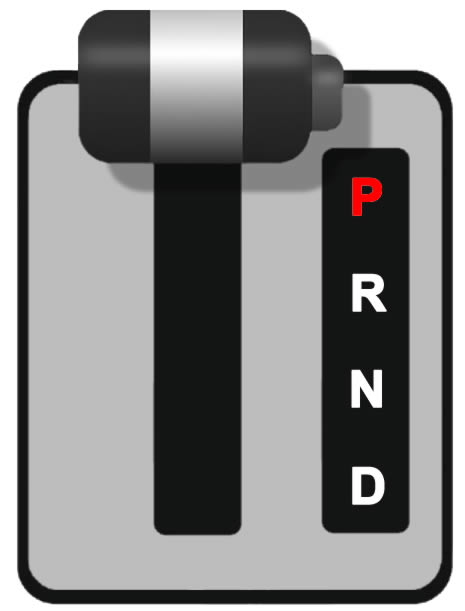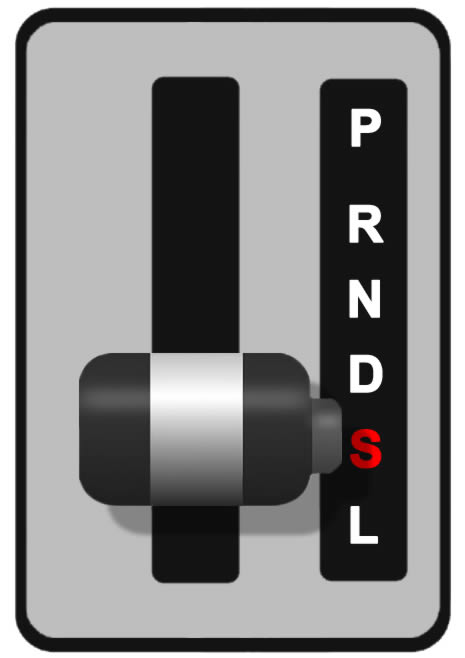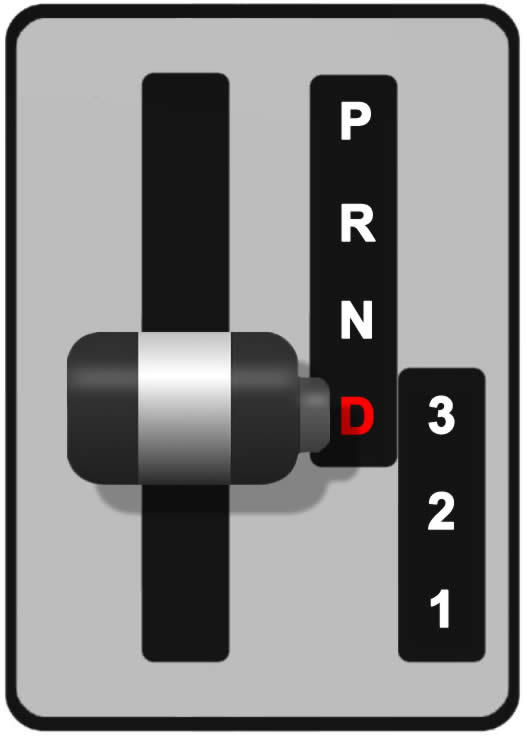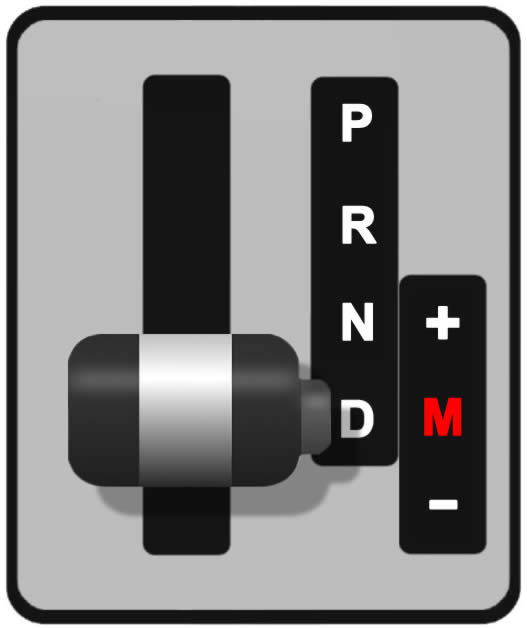Learning automatic gears is of course far simpler than manual gears. Even so, as you drive more cars, you’ll start to notice that not all automatic gears are the same and you might see different layouts for how the gear lever operates along with differing numbers and symbols.
As a new learner driver though, you just need to initially concentrate on the basic essentials needed for learning to drive and for keeping the vehicle safe and secure.
Automatic Car Gear Letters Meaning
Basic automatic car gears, or ‘transmissions’ are fully automatic meaning that the driver has no option to manually change the gears. Many automatic transmissions do however offer some level of ability for the driver to select gears and these are called semi-automatic transmissions. The main automatic car gear letters are PRND and stand for:

- P stands for Park. When Park is selected, the car’s gears are locked which prevents the car from rolling. As the name suggests, you select Park when parking the vehicle. When parking up, always apply the parking brake. If you’re stopped in traffic for an extended period of time, you can also select Park and apply the parking brake. See when to use Park in an automatic car for further information.
- R stands for Reverse. Most automatic cars come enabled with a ‘creep‘ function. This allows the car to move very slowly without the need for the accelerator in forward and reverse gears. This function is most useful in reverse where you can control the speed of the vehicle by use of the brake pedal only.
- N stands for Neutral. Neutral is no gear at all and there’s no transmission locking involved meaning the car is free to roll. You will generally only select neutral if your car is being towed or pulled onto a tow truck, or if you need to push a car if it’s stuck in snow, mud etc. See why do automatic cars have neutral for further information.
- D stands for Drive. By selecting Drive, the forward gears are engaged. Simply select ‘D’ and the automatic transmission will take care of all gear changes for you.
S and L on Automatic Cars
More advanced automatic gears will see others letters such as ‘S’ and ‘L’.

- S stands for Sport. Sports mode is the same as ‘Drive’ except that adjustments are made to the car. In ‘Drive’, the car changes gear as soon as possible to reduce fuel consumption, but in Sport, the car stays in each gear longer to give better acceleration. Other adjustments are often made to the accelerator pedal and steering to make them more responsive.
- L stands for Low gear. When in Drive, the automatic transmission changes up gears as your speed increases. Selecting Low on the gear selector prevents the gears changing up. Low gears give the car more pulling power, so you might want to select ‘L’ when towing a heavy load, or if you’re driving up a steep hill and the engine is struggling in Drive. Low gears should only be used at a low speed.
Numbers on Automatic Transmissions
Some automatic gears have numbers alongside the Drive (D) gear. These are low gears and the amount of gears available to choose from varies depending on the model of car. On some versions of automatic gears with number options, the ‘1’ (1st gear) is replaced with ‘L’ (Low gear).

The way the low 3, 2, 1 gears work can vary a little depending on the car, but in general, if you select ‘1’, the car will stay in 1st gear. If you select ‘2’, the car will use 1st and 2nd gear only and by selecting ‘3’, the car will use all the gears up to 3rd gear. To select the low gears, simply slide the gear selector lever to the right.
As already mentioned, the benefits of low gears is increased engine power for towing or going uphill, but can also prove beneficial for going downhill. Automatic cars tend to change up gear as you gain momentum, this isn’t always ideal when going downhill. Selecting a lower gear allows engine braking and used in combination with the foot brake can offer a safer, more controlled descent of steep hills.
M on Automatic Transmissions
On modern automatic cars, you’re more likely to see the letter ‘M‘, which stands for Manual. By selecting M with the gear selector lever, it means you can drive in manual mode.

Manual mode allows you to manually change gears yourself, rather than leaving it to the automatic transmission. Flip the gear lever over from ‘D’ and into ‘M’ to select manual mode. You may notice that some automatic transmissions have a ‘+’ and ‘-‘ symbol next to the M letter. This allows you to change up or down gear, so by pushing the gear lever up into the ‘+’ symbol, you change up a gear and push it down into the ‘-‘ symbol allows you to change down a gear.
Rather than having the ability to change up and down gear by using the gear selector lever, many semi-automatic cars have gear paddle changers located on the steering column. These are often more fun to use, particularly on sports cars.
good information,it’s very good for those of us who learning
Glad that you’re finding the content useful, Samuel.
Keep it up
Will do 🙂